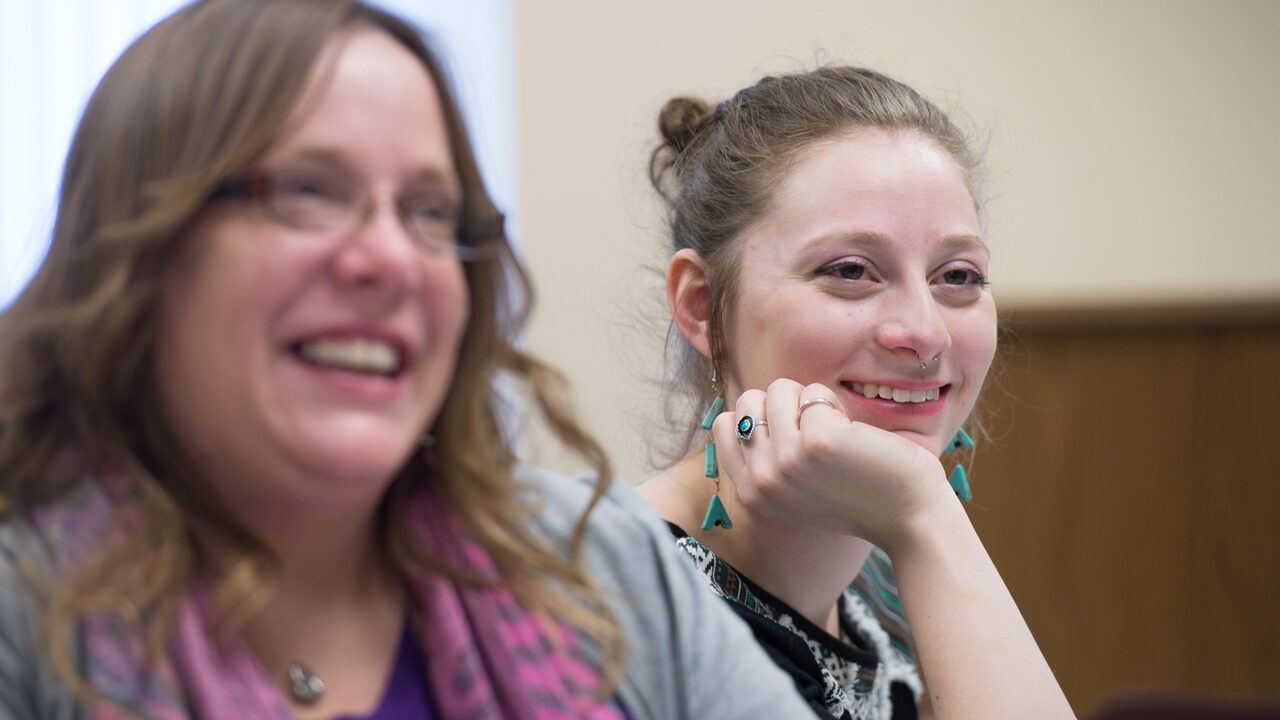Why Study History?
Reasons to pursue a Social Science (A.A.) degree with a concentration in History abound–and are rooted in the ability to better understand the human experience, empathize with others, and use the knowledge of the past to think critically about the present. Studying the past prepares one to think contextually, recognize change over time, and confront puzzling issues of social justice and other challenges on a local, national, and global level. Students of history learn how to weigh evidence with care, analyze stories and case studies, recognize diverse, conflicting views, carefully work with artifacts, and construct persuasive arguments using research. The History Concentration directly prepares students for seamless transfer to four-year institutions, helps them develop an analytical perspective of the world’s cultures, and introduces a broad range of skills useful for many different career paths.
Program Options
Curriculum Code: 0214 I Liberal Arts Credits: 45 I Program Credits: 16
This program provides an introduction to the field of history and prepares students for transfer into a bachelor’s degree program. Students will investigate the past, assess primary sources and craft-evidence based arguments while being challenged to consider specific time periods, regions, cause, effect and general change over time. Students who successfully complete this concentration can expect advanced standing upon transfer to a bachelor’s program in this area of study.
| Course Code | Course | Credits |
|---|---|---|
| EN 101 | Composition | 3 |
| EN 102 | Composition and Literature | 3 |
| HI 101* | Western Civ 13,000 BCE to 1517 CE | 3 |
| HI 102* | Western Civ 1517 to Present | 3 |
| HI 103* | United States History 1492-1865 | 3 |
| HI 104* | United Stated History 1865-Present | 3 |
| HI ELE | History Elective | 3 |
| HI ELE | History Elective (Other World Civilizations Elective see page 74) | 3 |
| HU ELE | Humanities Electives | 6 |
| MA ELE | Mathematics Elective | 3 |
| PS 101 PS 104 | American Government OR Contemporary Global Issues | 3 |
| PY 101 | General Psychology | 3 |
| SC ELE | Lab Science Elective | 3 |
| SL ELE | Social Science Elective | 3 |
| Liberal Arts Credits: | 45 | |
| CE 101 | College Experience | 1 |
| GN ELE | General Electives | 9 |
| EC 101 EC 102 | Macroeconomics OR Microeconomics | 3 |
| SO 101 | Introduction to Sociology | 3 |
| Program Credits: | 16 | |
| Minimum Credits: | 61 |
* These courses meet the SUNY transfer path for a history concentration.
Careers & Outcomes
Students of history pursue meaningful careers in professional areas including, but not limited to, law, education, government positions, business and management, not-for-profit, and politics. Furthermore, opportunities to complete a variety of internships can open doors to unique and rewarding experiences. Internships may lead to careers working with archives, digitization of records, or supporting local or national cultural attractions.
Career Opportunities
- Law
- Education
- Government positions
- Business and Management
- Not-for-profit
- Politics
- Archive and records preservation and digitization
Further Educational Opportunities
Students graduating with an A.A.S. in History can take advantage of specific, history-related internships, apply for field-specific scholarships, and augment their study through the Honors Program. Internships may often lead to careers working with archives, digitization of records, and at local or national cultural attractions. These include:
- Adirondack Experience
- Columbia County Historical Society
- Hudson River Maritime Museum
- Leisler Institute for the Study of Early New York History
- Olana
- The Thomas Cole House
- The New York State Museum
- Vedder Research Library of the Greene County Historical Society
- Smithsonian Institute
- Wikipedia Education
The history concentration provides exceptional transfer possibilities to public and private colleges in-state and nationwide. Transfer opportunities include but are not limited to: University at Albany-SUNY, SUNY Cobleskill, SUNY New Paltz, SUNY Oneonta, SUNY Plattsburgh, The College of St. Rose, Marist College, Sage College, and Siena College.
Global Meets Local
What sets Columbia-Greene’s History Concentration apart from other programs is the College’s proximity to the rich history of the Hudson Valley region. Opportunities for research that is both hands-on and substantive abound, often in conjunction with Columbia-Greene Library – which is home to an extensive collection of primary resources – and through partnerships and internships with several local historic sites and organizations. For example, artist Frederic Edwin Church’s homestead Olana – now a state historic site – is connected to the College’s campus by a short hiking trail. The homestead of Church’s mentor, Thomas Cole, is also a walk away, via a footpath that crosses the historic Hudson River. The Bronck House – a National Historic Landmark believed to be the oldest surviving building in Upstate New York – is less than a 20-minute drive from campus. In several courses, the history curriculum incorporates visits and study at all of these sites.
Flexible
Columbia-Greene’s small class sizes and dedicated faculty have fostered an environment in which History Concentration students can tailor their paths of study to local, regional, national, or global history – and even zoom in on a specific time period – while still completing all necessary coursework for transfer.
Traditional, Online, Hybrid, and Hyflex classes within the History Concentration have been developed in tandem with faculty experienced in distance learning to be both immersive and innovative. Students may even take advantage of online internships, assisting with digital content projects for websites including the Smithsonian, Boston Public Library, National Archives, and Auckland War Memorial Museum. They may also develop their own digital content projects on a topic of their choice, to be published as part of the Wikipedia Education project.
